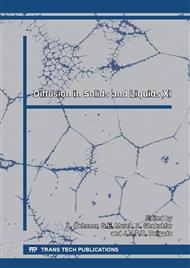p.110
p.116
p.119
p.125
p.131
p.135
p.142
p.148
p.152
Mechanical Characterization and Water Sorption in Polyester Matrix Composites Reinforced with Sisal Fiber: An Experimental Investigation
Abstract:
In this work we evaluated the mechanical characterization and sorption water of polymer matrix composites reinforced with sisal fibers at different bath temperatures. Experimental tests of tensile (ASTM D 3039), impact (ASTM D 256) and water sorption in samples with rectangular cross section (dimensions of specimens 20x20mm) were made. It was used the unsaturated polyester resin matrix (Resapol 10-316). With the aim of analyzing the tensile strength and the impact, samples were made with fiber content (by weight) of 44.6%. Water sorption tests were performed with the specimens immersed in water at 25°C, 50°C and 70°C. The results showed that for higher water temperature less time the sample takes to reach saturation and mechanical properties is reduced.
Info:
Periodical:
Pages:
131-134
Citation:
Online since:
July 2016
Authors:
Price:
Сopyright:
© 2016 Trans Tech Publications Ltd. All Rights Reserved
Share:
Citation:


